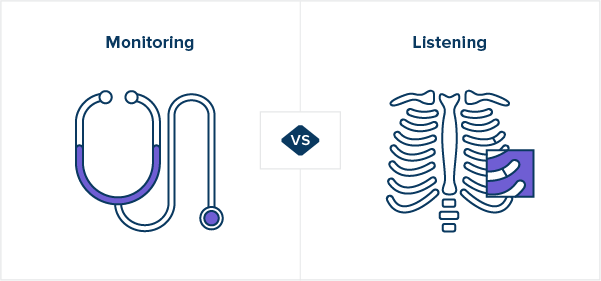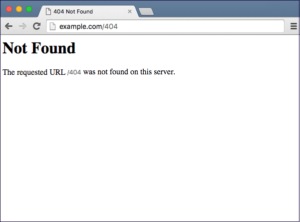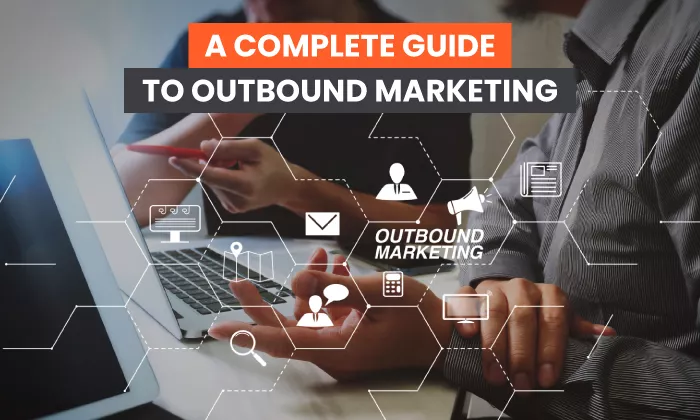Having a social media presence is arguably mandatory for brands in today’s fast-paced and increasingly connected world. However, simply creating profiles and just setting them live isn’t enough. You have to engage and really listen to how people are talking about your brand on all these different channels. A well-run social media strategy requires time and cultivation.
Social listening involves using a software suite that monitors how current and potential customers talk about you and your products across the internet and social media.
Social listening is one of the best things you can do to understand your audience. Social media accounts are living, breathing entities that are in constant dialogue with your customers. This means they are a treasure trove full of easily-accessible, real-time customer feedback that you can use to inform your marketing strategies.
In the past, before this strategy was called social listening, I would advise clients to visit their Amazon store, or fan-run forums to see how customers were talking about their products or brands. At that time it was a far more manual process. Today, the process is far easier. In this post, we’ll discuss how social listening suites allow you to stay ahead of your customers’ needs and desires. You’ll be able to understand what they wish you’d do better, what you’re excelling at, and what they wish you’d do next.
What Is Social Listening?
Social listening is when you track and analyze how your customers (or potential customers) talk about you online. Maybe they’re singing your praises, sharing frustration about a product or experience, or asking how your product compares to another they’re considering. This also includes how people are discussing your industry.
Social listening must consider consumer sentiment throughout the user journey: awareness, acquisition, support, and advocacy. It should track direct, indirect, and brand-specific mentions. However, as I always say around here, tracking is great, but what you learn from it is more important.
These mentions are then compiled to provide insights into prominent themes uncovered during analysis. These insights provide a starting point with clear action items for the design and execution of marketing and customer experience (CX) strategies across your various channels.
Social Listening is “analyzing how people talk about your brand, products, and industry, and using that information to define marketing and CX strategies.”
Social Monitoring vs. Social Listening
There’s some nuance to deciphering the difference between social monitoring and social listening.
Social monitoring involves tracking what your customers are saying about your brand on social media and responding to them. It shows that your brand cares about its reputation and customers and is something that all businesses should consider deploying. It is, unfortunately, somewhat reactionary.
Social listening takes things further by adding industry insights.
As a simple example, let’s say you’re a mortgage company. Social monitoring would uncover that people are upset about increased monthly payments for a recent refinance quote. Social listening would note that the fed is raising interest rates to combat inflation and that mortgage rates are climbing. This analysis should look for strategy shifts and include competitors’ actions to combat this overall trend.
A brilliant way to illustrate the difference between the two comes from Sprout Social, “Monitoring addresses the symptoms, and listening reveals the root cause.”
Why is Social Listening Important?
Social listening gives you valuable insight as you plan and refine your customer experience (CX) and marketing strategy. This intelligence can assist before launching a new product by looking early at industry trends and competitive products. By having things like term volume, competitor offerings, and pain points at hand, you can better map out your launch and how to best position your product.
Beyond that, once you’ve launched, you can continue to monitor how your brand and products or solutions are discussed in forums, product reviews, or social media. Coupling this with industry trends will allow you to drive a feedback cycle that will output new products or upgrades. Your customers are already discussing what the next firmware or product release should look like. Ensuring that they feel heard will continue to keep them as customers and advocates. These insights can all drive content decisions. Your marketing material will seem as though it’s tailored directly to your customers’ needs.
Identify Customer Pain Points
Customers are talking about your product or those similar to it across the internet. As you can imagine, a lot of that chatter is about customers’ pain points when using a product or service. There’s a forum for virtually any topic you can think of where people discuss why something isn’t working. If your product is sold on an online marketplace, there are likely review sections where people rate setup, long-term reviews, or initial impressions.
All of this data should be tracked and analyzed. From there, use the analysis to answer customers in those online properties. You should also create new content that helps customers overcome these issues. Examples include new product page copy, new setup guides, video walkthroughs, and/or FAQs.
Discover Product Feedback
Similar to the pain points you may uncover with social listening, you’ll also find lots of feedback about your product. This can be good or bad. You can use this feedback to overcome new customers’ purchasing objections to drive adoption.
This also helps you keep existing customers happy by adding their feedback to upcoming firmware releases, ensuring that new products have what they’re asking for and keeping them in your ecosystem.
Learn From Competitors
Tracking your competitors is another important tenet of social listening. Keeping an eye on the competition and what people say about them will keep you ahead of their offers, appraised of their new products and innovations, and allow you to learn from their successes and mistakes.
Social listening can also let you see how users compare like companies: which they like more and why.
Stay Up to Date on Industry Trends
As you start to let this all sink in, you’ll likely realize that social listening is most impressive when you think about its scope. We’re talking about tracking a ton of branded and non-branded terms that are important to your business. These can be company terms, competitor terms, and industry terms. For the latter, tons of websites, YouTube channels, Twitter channels, etc., already cover your industry. They often write about the latest trends, whether new products, technology, supply line issues, or other small details that can impact your business and place in the industry. It behooves you to keep an eye on these important issues.
Find Potential Influencers to Work With
While you’re following those Twitter and YouTube channels for industry insights, you can also identify important influencers in your industry that you might want to collaborate with to help get your brand and products in front of your target audience.
Influencer marketing campaigns are a great way to get industry experts talking to their passionate followers about your products.
Help with Crisis Management
If something goes wrong for a company, the word can get out quickly these days. And if that company isn’t actively listening for its brand name, it might have a full-blown crisis on their hand before it can craft a response. I’ve had this happen to clients.
Having social listening in place should allow a company to learn about cascading negative sentiment before it becomes a full-blown crisis. This extra time could allow a problem to be addressed quickly or for a response to be crafted until it is fixed.
Social Listening Tools
There are a lot of available tools out there that you can use for social listening. Prices range from affordable to ‘Enterprise.’ These are some of the main tools we use.
Sprout Social
Here at Portent, we’ve used Sprout Social for a number of clients over the years, and they’re always the first company that we recommend to clients who are looking for a good place to start their social listening journey.
As a bonus, they integrate with our next recommendation, Hubspot, if you’re in their ecosystem. We’ve been recommending them for a literal decade now:
Hubspot
The beautiful thing about Hubspot is how it integrates with its already powerful suite of solutions. If you’re already using their CRM or marketing automation, you should definitely look at investing in social listening from Hubspot.
If you want to explore more options, check out Hubspot’s post about social listening tools.
Example of Social Listening
So what does this all look like in action? Let’s start with a hypothetical company that recently started selling super-niche racing paddle boards (to be honest, I prefer outrigger canoe racing, but it’s even more niche). Let’s call this company FastrBORD.
FastrBORD has only been selling its board for six months, and its social media properties have been around for nearly that entire time. So let’s quickly note that if we were just starting them off with social monitoring of their owned properties, we’d be missing out on a whole lot of information. Social listening would actively track industry terms and trends for the Standup Paddling (SUP) community. This information would then be turned into content that can be used to promote FastrBORD. This can help identify the hot and current topics folks are interested in. Rather than guessing, we can use this data to write the right content.
Plus, FastrBORD can see what people are saying about the competition. Are their boards better built? Do they last longer? How do people see FastrBORD when stacked against the competition? Are people winning with FastrBORD? You can even identify trusted voices in the community speaking about the brand positively and then reach out to them to see if there’s an opportunity for an influencer campaign.
How to Start Social Listening
The simplest way to start social listening is to admit that you need it (and you do). Yes, this is a blanket statement, and I’m being a bit flippant here. But imagine for a second a brand that you connect with. One that treats you right, one that really speaks to you. One that always seems to get the right press. One that has a product set that is a notch above the rest. One that deals with a crisis with aplomb. They are likely monitoring their space in the industry, its trends, and the competition. They’re using social listening to make timely, informed decisions to attract, keep, and continually ‘wow’ customers.
Now, imagine your company with social listening. You’ll need to start by gathering up keywords, industry and company terms, competitors, brand jargon, and an idea of what this data will inform. Once you have this all at hand, you’ll need to get this information into your platform of choice. Each platform will have onboarding guides and best practices to follow. From there, you can run your initial audits to get an initial baseline to plan your next steps!
Wrap-Up
Market research doesn’t have to be hard, and it certainly doesn’t have to be something that happens only periodically. Social listening allows you to better understand and drive higher engagement with your target audience. You’ll be empowered with timely insights into what your customers are talking about and be alerted to any potential issues with your products, services, or larger industry issues that could affect your business.
There is a social listening tool for nearly every budget, so I highly encourage you to investigate a platform sooner than later. Trust me; you need these insights, so get out there and start listening!
The post What Is Social Listening & Why It’s a Gold Mine of Insights appeared first on Portent.



